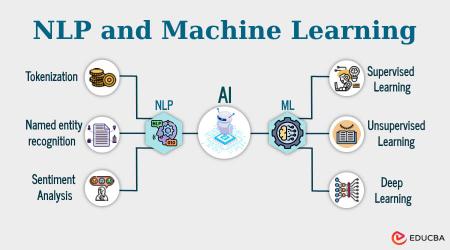- Ensure that the training data for AI models answering multiple-choice questions is of high quality and diverse to prevent biases and ensure accurate predictions.
- Detect and address biases in datasets used for training AI models, especially focusing on underrepresented groups or topics, to ensure fairness and unbiased outcomes.
- Implement robust data privacy and security measures to safeguard sensitive information used in AI algorithms and comply with data protection regulations.
AI technologies can be trained to answer multiple-choice questions using machine learning algorithms, natural language processing techniques, and deep learning models. These systems can learn patterns and relationships from large datasets of multiple-choice questions and answers, enabling accurate predictions. AI-powered platforms and tools, particularly in educational settings, provide quick and automated responses based on input text and available answer choices. However, the accuracy of responses may vary depending on the complexity and nuance of the questions. Continuous improvement and refinement of AI algorithms are necessary to enhance their performance in accurately answering multiple-choice questions across different domains.
Machine learning and NLP
Machine learning algorithms play a crucial role in answering multiple-choice questions. Supervised learning involves training machine learning models on labelled datasets, where each question is associated with the correct answer choice. These algorithms learn patterns and relationships between the question text and answer choices to make predictions on unseen questions. Classification models, such as logistic regression, decision trees, random forests, and support vector machines, are commonly used for this task.
Natural Language Processing (NLP) techniques include text preprocessing, semantic analysis, and named entity recognition. Text preprocessing involves cleaning, tokenizing, and normalising the question text and answer choices, while semantic analysis helps AI systems interpret the relationships between words and phrases, aiding in accurate answer prediction. Named Entity Recognition (NER) identifies and classifies entities mentioned in the text, providing additional context and improving the AI system’s ability to make informed decisions.
Deep learning models like recurrent neural networks (RNNs) and transformer architectures have shown promise in natural language processing tasks. RNNs can capture sequential dependencies in the text, while transformer models excel at capturing long-range dependencies in the data. Attention mechanisms in deep learning models allow the system to focus on relevant parts of the question and answer choices, enhancing the model’s ability to interpret complex relationships within the text.

Training and optimization of AI systems
The training and optimisation of AI systems involves utilising large datasets, employing fine-tuning and optimisation strategies, and embracing continuous learning mechanisms. Large datasets are essential for training AI systems on multiple-choice questions, as they capture a diverse set of question types and complexities. Data collection involves sourcing questions from educational materials, online repositories, and assessments to create a comprehensive dataset. Annotation of the dataset includes labelling each question with the correct answer choice, allowing the AI model to learn from annotated data.
Data preprocessing and augmentation are applied to clean and standardise the data before training. Data augmentation methods introduce variations in question formulations, answer choices, and language nuances, improving the AI system’s generalisation and performance on unseen questions. Hyperparameter optimisation involves adjusting parameters like learning rates, batch sizes, and regularisation techniques to enhance the model’s performance. Model architecture refinement involves experimentation with different neural network architectures, such as convolutional neural networks (CNNs) and recurrent neural networks (RNNs), to optimise the model’s capacity to learn complex patterns and relationships in the data.
Continuous learning is also essential for AI systems to adapt to different question types and complexities. Transfer learning allows AI systems to leverage pre-trained models on large language datasets to improve performance on multiple-choice questions. Implementing an online learning approach enables the AI system to continuously update and adapt based on user interactions, refining its predictions, learning from mistakes, and improving accuracy over time.
AI-powered platforms for answering multiple-choice questions
AI-powered platforms for answering multiple-choice questions are designed to provide accurate and efficient responses to a wide range of questions. These platforms have user-friendly interfaces, intuitive navigation, and seamless integration with various learning management systems. AI algorithms are trained to understand and process the text of questions and answer choices, using natural language processing techniques to analyse semantics, context, and relationships. Advanced machine learning models work in the background to infer the user’s query and generate accurate responses.
AI platforms integrate advanced technologies such as natural language understanding (NLU) capabilities, contextual reasoning, and interactive responses to enhance user engagement and facilitate a dynamic learning environment. Feedback mechanisms enable users to provide input on the accuracy and relevance of responses, ensuring the AI system evolves and adapts to user preferences and requirements.
Also read: AI and NLP: Understanding their connection
Personalised recommendations are offered based on user interactions, learning preferences, and performance history, tailoring the learning experience to users. Adaptive learning algorithms adjust the difficulty level of questions based on the user’s proficiency and progress, analysing user responses, identifying areas of weakness, and dynamically selecting questions to challenge and support the user’s learning journey.
By incorporating advanced technologies, interactive features, user feedback mechanisms, and personalised learning experiences, AI-powered platforms for answering multiple-choice questions deliver effective, personalised, and engaging educational experiences to users in diverse learning environments.
Challenges and considerations
AI-powered platforms for answering multiple-choice questions face several challenges, including data quality, bias, privacy and security, model interpretability, explainability, fairness and accountability, user experience and engagement, educational efficacy, scalability and maintenance, and system maintenance and updates. Data quality and bias are crucial for ensuring fair and unbiased outcomes, while data privacy and security are essential for handling sensitive information.
Also read: Future trends in AI, analytics, and automation
Model interpretability and explainability are also crucial, as AI models used in question-answering platforms are often complex and opaque. Incorporating explainability techniques can enhance the transparency of AI systems. Fairness and accountability are essential for mitigating biases and discrimination, and monitoring model performance across different demographic groups and implementing fairness-aware algorithms are critical steps.
User experience and engagement are also crucial, with intuitive interfaces, responsive feedback mechanisms, and personalised learning features enhancing user engagement. Assessing the educational efficacy and impact of AI-powered question-answering platforms is essential for validating their effectiveness in improving learning outcomes. Continuous monitoring and evaluation of the platform’s impact on student learning and academic achievements are key considerations.
Scalability and maintenance are also essential for AI-powered platforms, with challenges in computational resources and infrastructure. Implementing scalable architecture, cloud-based solutions, and efficient data processing pipelines is crucial for platform growth. Regular maintenance, updates, and upgrades are necessary to keep AI-powered platforms up-to-date with the latest advancements. Establishing a robust maintenance schedule and version control processes ensures the platform’s functionality and performance are optimised over time.

